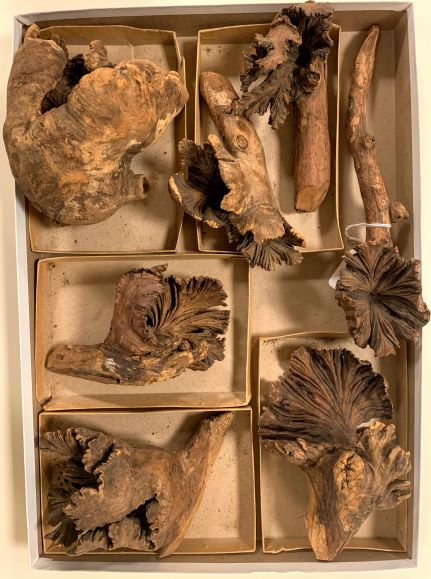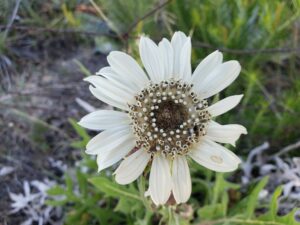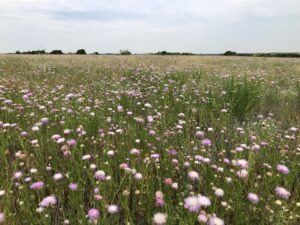This summer the BRIT Herbarium began investigating and curating a unique collection of specimens comprised mostly from the Houston Public Museum (HPM) (now known as the Houston Museum of Natural History) collection acquired in 2001. In addition to the 10,000 sheets of herbarium specimens, HPM donated its microscope slides, glass photographic slides, and a wood collection – or xylarium.

This 90+-year-old xylarium is home to a variety of shapes, cuts, sizes, and species of woody plants from across the world! Unfortunately, some of these specimens lacked labels or had labels with incomplete information, leaving curators with some mysteries regarding names and provenance.

Of these anonymous specimens, a handful of unique pieces of wood that appeared to be either limbs or roots were brought to the curator’s attention. What would cause the bark of a tree to create such weird shapes? It had to be either the tree itself, a fungus, a parasite, or something completely alien.
After days of contemplation, reading, and dozens of online searches, curators finally landed on the culprit: Dactylanthus taylorii, or the flower of Hades, or wood rose. The genus name Dactylanthus is derived from the Greek word dáktulos meaning finger and ánthos meaning flower. This flowering plant species belongs to the parasitic family Balanophoraceae. The wood rose and its 44 other parasitic relatives grow in inland forests, attaching themselves to the roots of trees and shrubs. This species in particular is unique because it can only be found on North Island in New Zealand. In fact, it is the only parasitic flowering plant in the entire country!

This species has both male and female flowers and is primarily pollinated by the short-tailed bat. Several researchers have used time-lapse video footage to study the day-to-day lives of these flowers and who comes to visit them. Click HERE to see a video!
So Dactylanthus taylorii latches itself onto a tree’s root, but why does the root create this rose-like deformity? Trees respond to infections, bacteria, fungi, and injury by forming galls, burls, or tumors. This is a way for the tree to isolate and contain this external harm through cambial growth of the bark. We can assume the abnormality caused by Dactylanthus taylorii is not too different from others. The tree is able to live with this parasite by warping its bark in this rose-like shape.

After diving deep into the wood rose and absorbing its fascinating life, it was hard to swallow that this species is threatened by introduced possums, habitat loss, and a decline in the population of its pollinators.
It’s safe to assume that these plants were flourishing almost 90 years ago when these specimens were collected compared to today. Currently it is illegal to collect these wood roses. We can only hope that with good conservation practices this species will persist another 90 years. Although we don’t have the actual flower of Dactylanthus taylorii, the BRIT xylarium is fortunate to have some evidence that this curious little bat-pollinated parasitic flower ever existed.
Do you love woody plants? Interested in wood science? You can help us with the xylarium! Email Ashley Bordelon to schedule a time to visit and check out all these specimens.
Sources:
*Dactylanthus taylorii (Wood Rose). T.E.R:R.A.I.N – Taranaki Educational Resource: Research, Analysis and Information Network. T.E.R:R.A.I.N.
*Dawson, B. 2018. “Meet the Maker: Wellington-based botanical artist Sue Wickison.” Stuff – Garden. Stuff Ltd. 23 Mar 2018.
*Ecroyd, C.E. 1996. The ecology of Dactylanthus taylorii and threats to its survival. New Zealand J. Ecology 20(1):81–100. www.jstor.org/stable/24053736.
*New Zealand Forest Owners Association. Wood Rose. Dactylanthus taylorii. Rare Species: Guidance for managing rare species in plantation forests. Cerulean.
*Nix, S. 2019. Recognizing and controlling a tree burl. ThoughtCo.com. 28 Jan 2019.
This post is part of our “Cabinet Curiosities” series that explores significant items from the Herbarium collection. Posts are written by staff, volunteers, and interns. Read more from the series here.




